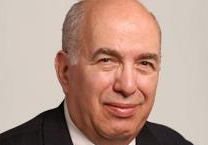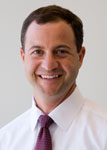Fixed-Income Strategy: What’s Jeffrey Gundlach Doing?

Few bond fund managers attract as much attention as DoubleLine Capital’s Jeffrey Gundlach. His firm has seen its assets under management grow to more than $45 billion in just over two years since its founding. Although these assets span a multitude of fund vehicles, by far the largest is the DoubleLine Total Return Fund (DBLTX), which held almost $35 billion as of 25 October. I am always anxious to see portfolio changes made in this fund, and I recently had the opportunity to take a close look at the fund holdings as of 30 September, which can give some valuable insight into how fixed income investors might consider positioning their portfolios.
He’s Made a Bigger Move into CMBS
During the month of September, DBLTX’s percentage allocation to commercial mortgage-backed securities (CMBS) rose to 4.5%, up from 3.6% in August. That means he bought almost $300 million of CMBS.
CMBS are also a favorite in the DoubleLine Low Duration Bond Fund (DBLSX); they make up 19.7% of the fund. The rally in CMBS has been strong, particularly since QE3 (the third round of “quantitative easing”). Annaly Capital Management wrote a summary of market action that describes it clearly:
During the quarter ended September 30, 2012, 10-year AAA new issue spreads have rallied from swaps +150/160 basis points (bps) to a level of swaps +85/95 bps. 10-year AAA legacy CMBS have likewise benefited, rallying from approximately swaps +230/235 bps to swaps +155/160 bps. Mezzanine bonds rated BBB and BBB- have seen spread tightening on the magnitude of 125 bps and 200 to 225 bps, respectively. . . . Commercial mortgages, even at current historically low rates, still exhibit good relative value against other fixed income alternatives.
Remember that bond yields move inversely with bond prices, so a fall in yield from a spread of +150/160 bps to +85/95 bps corresponds to a price increase of about 5%.
His Portfolio Is Low Duration with Plenty of Cash
It is no secret that Gundlach believes yields on U.S. Treasury bonds offer a poor risk–return proposition. With a modified duration of 1.59 (i.e., the fund would lose 1.59% in value during an instantaneous 100 bp rise in interest rates), DoubleLine is exposed to much less interest rate risk than its peers.
The PIMCO Total Return Fund, for instance, has a modified duration of 4.02 and would thus likely perform better if Treasury yields were to reach new lows.
Given the significant rally in both agency and non-agency MBS, it appears that Gundlach is keeping a healthy cash allocation (≈16% as of 30 September 2012) to deploy if either U.S. Treasury yields quickly rise or non-agency MBS prices fall. In short, the combination of a high cash balance and low modified duration leaves him both more flexible for future opportunities and less sensitive to changes in rates.
He’s Bought Some Long Duration to Hedge
As I mentioned earlier, the aggregate portfolio of DBLTX has a modified duration of only 1.59. However, when Gundlach and his team do buy bonds with high duration, they buy extremely long and less negatively convex MBS.
Their latest strategy in accomplishing this has been adding mortgage pools that are backed by Home Affordable Refinance Program (HARP) loans. These pools exhibit less negative convexity because the borrowers typically have a loan-to-value ratio in excess of 100% If interest rates were to fall again and hit new lows, mortgage pools such as these would become more valuable and would result in fewer prepayments than an average bond , since borrowers cannot reduce interest rates by refinancing into a conforming mortgage.
He’s Reduced Exposure to Non-Agency MBS
Month over month, the allocation to non-agency MBS fell from 30.4% to 30.0%. There were inflows of ≈$1.7 billion into DBLTX during September 2012 and a net reduction in non-agency MBS. According to DoubleLine, this occurred because the firm diverted principal run-off and new cash inflows into other asset classes.
This change in allocation might seem small to people who aren’t focused on this market, but I think it says a lot about Gundlach’s current view on non-agency MBSs in general. A dramatic run-up in prices has occurred in 2012, and DoubleLine has been a huge beneficiary of it.
As quantitative easing has continued to push investors out of agency MBS and further down the credit risk spectrum, non-agency MBS have seen a surge of new interest from investors seeking yield, and consequently, the prices have risen dramatically. Many new entrants to the non-agency space have enjoyed strong returns by chasing the riskier subprime section of the market, but Gundlach by and large prefers the prime and Alt-A segments. I’d guess that Gundlach will continue to be cautious in adding incremental non-agency MBS given the recent run-up.
The Big Picture
The recent moves in DBLTX indicate that Gundlach is currently cautious on both credit and duration risks. Because the fund has a large cash allocation, it is well positioned to capitalize on a potential “risk-off” event in the markets or a rise in interest rates.
Overall, I like the positioning that DBLTX has at the current time. It hasn’t chased yield in non-agencies and has kept a good balance by adding long government-backed MBS to hedge while keeping dry powder for opportunities that come up.
If you liked this post, don’t forget to subscribe to Inside Investing via Email or RSS.
Please note that the content of this site should not be construed as investment advice, nor do the opinions expressed necessarily reflect the views of CFA Institute.
Photo credit: Doubleline Capital



Thanks for the informative article. I have DBLTX in both my IRA and taxable accounts.